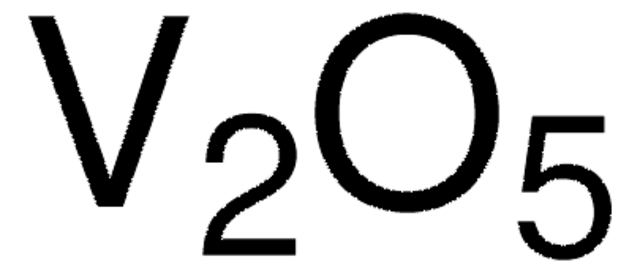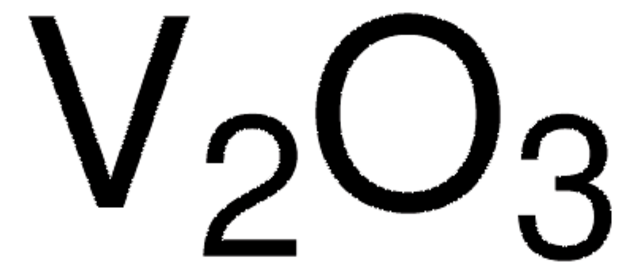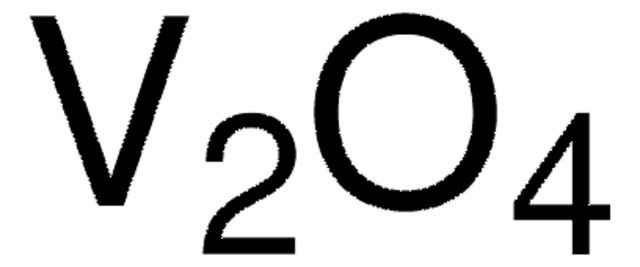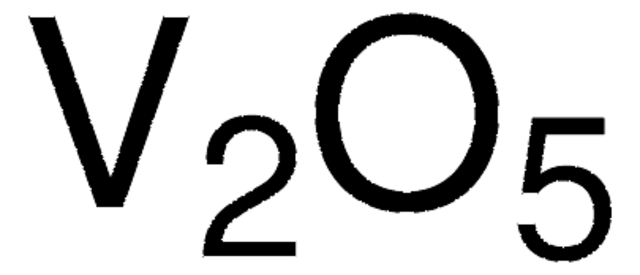204854
Vanadium(V) oxide
99.9% trace metals basis
Synonym(s):
Divanadium pentaoxide, Divanadium pentoxide, Pentaoxodivanadium, Vandia
About This Item
Recommended Products
Assay
99.9% trace metals basis
form
powder
composition
V2O5
reaction suitability
reagent type: catalyst
core: vanadium
greener alternative product characteristics
Design for Energy Efficiency
Learn more about the Principles of Green Chemistry.
sustainability
Greener Alternative Product
mp
690 °C (lit.)
density
3.35 g/mL at 25 °C (lit.)
application(s)
battery manufacturing
greener alternative category
SMILES string
O=[V](=O)O[V](=O)=O
InChI
1S/5O.2V
InChI key
GNTDGMZSJNCJKK-UHFFFAOYSA-N
Looking for similar products? Visit Product Comparison Guide
General description
Application
Signal Word
Danger
Hazard Statements
Precautionary Statements
Hazard Classifications
Acute Tox. 2 Inhalation - Acute Tox. 3 Oral - Aquatic Chronic 2 - Carc. 1B - Lact. - Muta. 2 - Repr. 2 - STOT RE 1 Inhalation - STOT SE 3
Target Organs
Respiratory system, Respiratory Tract
Storage Class Code
6.1A - Combustible acute toxic Cat. 1 and 2 / very toxic hazardous materials
WGK
WGK 3
Flash Point(F)
Not applicable
Flash Point(C)
Not applicable
Personal Protective Equipment
Certificates of Analysis (COA)
Search for Certificates of Analysis (COA) by entering the products Lot/Batch Number. Lot and Batch Numbers can be found on a product’s label following the words ‘Lot’ or ‘Batch’.
Already Own This Product?
Find documentation for the products that you have recently purchased in the Document Library.
Articles
Lithium-Ion Battery Performance: Dependence on Material Synthesis and Post‑Treatment Methods
Professor Chen (Nankai University, China) and his team explain the strategies behind their recent record-breaking organic solar cells, reaching a power conversion efficiency of 17.3%.
Our team of scientists has experience in all areas of research including Life Science, Material Science, Chemical Synthesis, Chromatography, Analytical and many others.
Contact Technical Service









